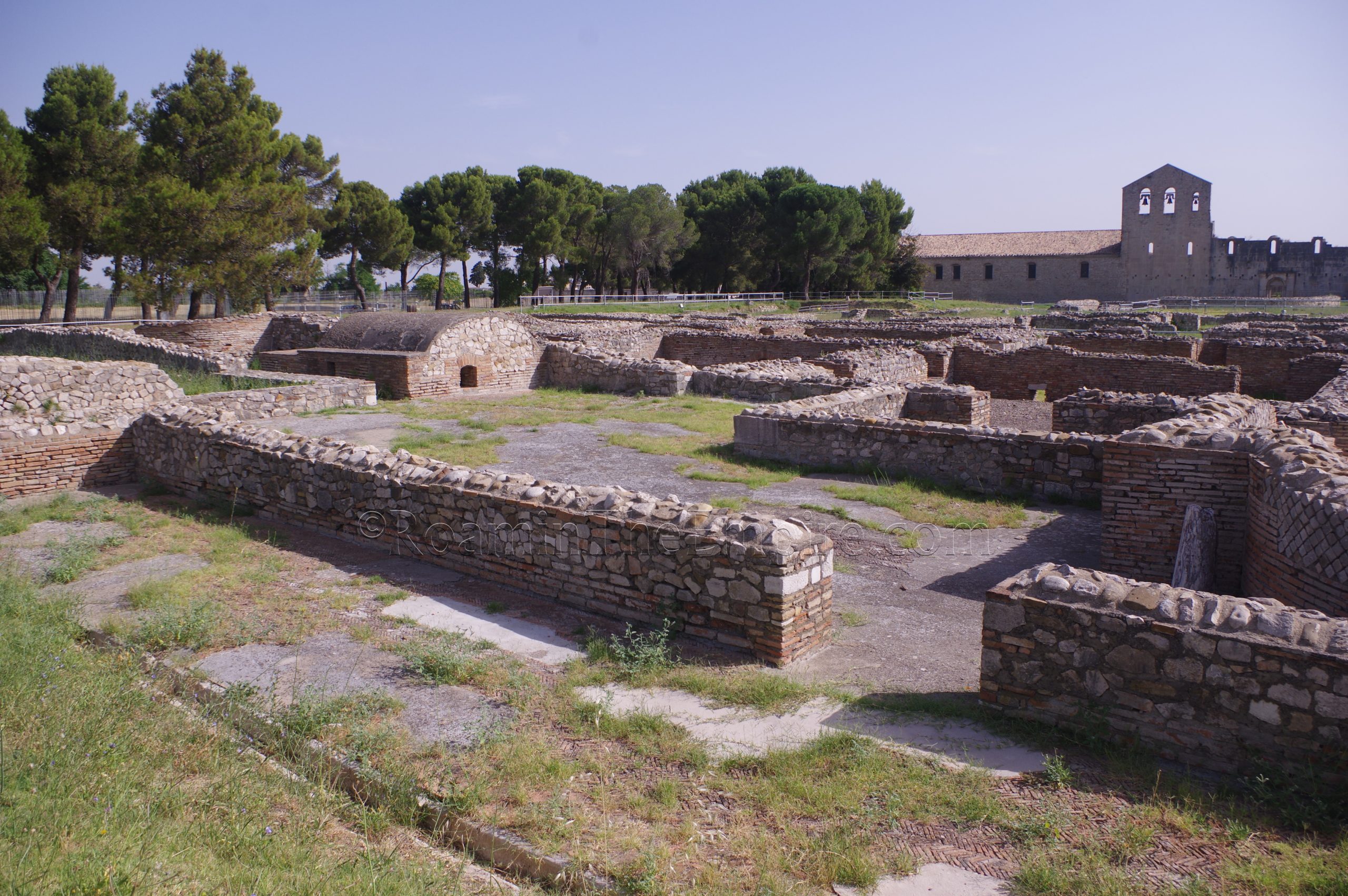
Most Recent Visit: July 2023
Little is known of Venusia (today modern Venosa in Italy’s Basilicata region) prior to conquest by the Romans, though according to legend it was founded by Diomedes after his arrival in Italy. He dedicated the city to Aphrodite in hopes of making amends with the goddess after he wounded her during the Trojan War. The city was then founded as Aphrodisia, but later came to be named after Aphrodite’s Roman counterpart, Venus. The area of Venusia seems to have been populated by the Daunii from about the 10th century BCE, though nothing has been found of a settlement in the immediate area of Venusia. In the 6th-5th century BCE, the territory seems to have fallen to the Samnites, encroaching from the north. It is this expansion at the expense of their southern neighbors that eventually got the Romans involved in the mid-4th century BCE, resulting in the Samnite Wars.
Venusia was captured by the Romans in 291 BCE by the consul Lucius Postumius Megellus toward the end of the Third Samnite War. The Samnite settlement is described at this time as being important and populous, and Megellus is said to have had many of the Samnite inhabitants killed. In the years that followed, Venusia was given the rank of colonia Latinae and reportedly received a contingent of about 20,000 colonists, a much larger number than what is typically allotted for a colony. The colony flourished through the 3rd century BCE and following the Roman defeat by Pyrrhus of Epirus at Heraclea in 280 BCE, the Roman survivors retreated to Venusia. It remained an important center for the Romans later that century during Hannibal’s campaign in Italy during the Second Punic War. Following the disastrous Battle of Cannae in 216 BCE, the consul Gaius Terrentius Varro and some 700 surviving cavalry took refuge in Venusia and were looked after by the inhabitants. An additional 4,000 survivors of the battle eventually made their way there. A few years later in 208 BCE, the consul Marcus Claudius Marcellus was ambushed near the city and killed by Hannibal’s forces. As the war went on and many other Roman settlements in the south wavered in material support, Venusia is explicitly mentioned as being ready and able to continue their supply of men and supplies for most of the war, and was used as a headquarters for Roman commanders in Apulia.The war, however, took its toll on the city and in 200 BCE, following the end of the Second Punic War, a fresh wave of colonists was sent to Venusia to replenish the manpower there.
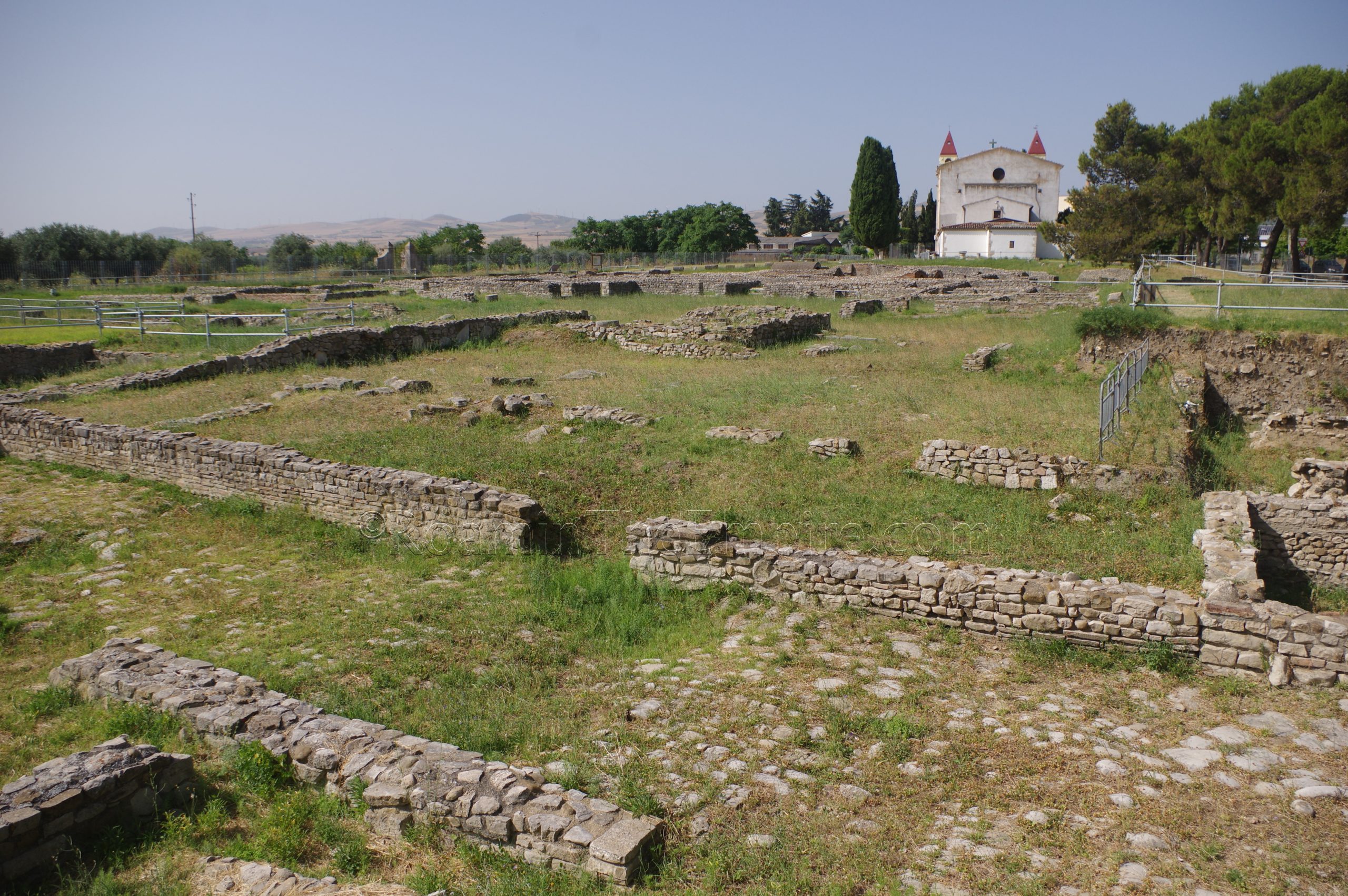
During the Social War in the early 1st century BCE, Venusia was the sole Latin colony to side with the allies, and may have been where a commander of the allies named Herrenius was from. Though the territory suffered during the war, Venusia itself does not seem to have been captured or suffered from a direct siege. At the conclusion of the war, it seems the city was just as prosperous and was soon elevated to the rank of municipium and the inhabitants enrolled in the tribus Horatia. On December 8, 65 BCE, the poet Horace was born in Venusia, and the city is mentioned by name a few times in his works. The city’s time as a municpium would be short-lived, though, as it would receive more veterans from the armies of the triumvirs around 43 BCE and once again become a colonia. Venusia seems to have retained its status as a colonia through the imperial period, and though it is not mentioned in the sources, is believed to have remained an important city in the region.
Getting There: Modern Venosa is a relatively small town of about 12,000 people and is not on any of the regional rail lines. It’s easiest to get there by private transportation, which is what I did when I visited. There is a bus from Rionero In Vulture, probably the closest town that is on the rail lines, but that route only departs once a day, at 5:15 in the morning. Similarly, there is a single bus that leaves from Bari in the afternoon and takes about 2 hours to get to Venosa at a cost of 10.30 Euros, and has a return trip at 5:55 in the afternoon (just 2 hours after the arrival bus). It’s difficult to do a round trip out to Venosa from the same place while relying on public transport.
Just outside of Venosa, on the northeast side of town along SP18, are the primary archaeological remains from ancient Venusia; the Scavi Archeolgici Di Venosa. The archaeological area of Venusia is open Monday through Sunday from 9:00 to 13:45. Admission is 2.50 Euro, which also includes entrance to the Museo Archeologico Nazionale Mario Torelli.
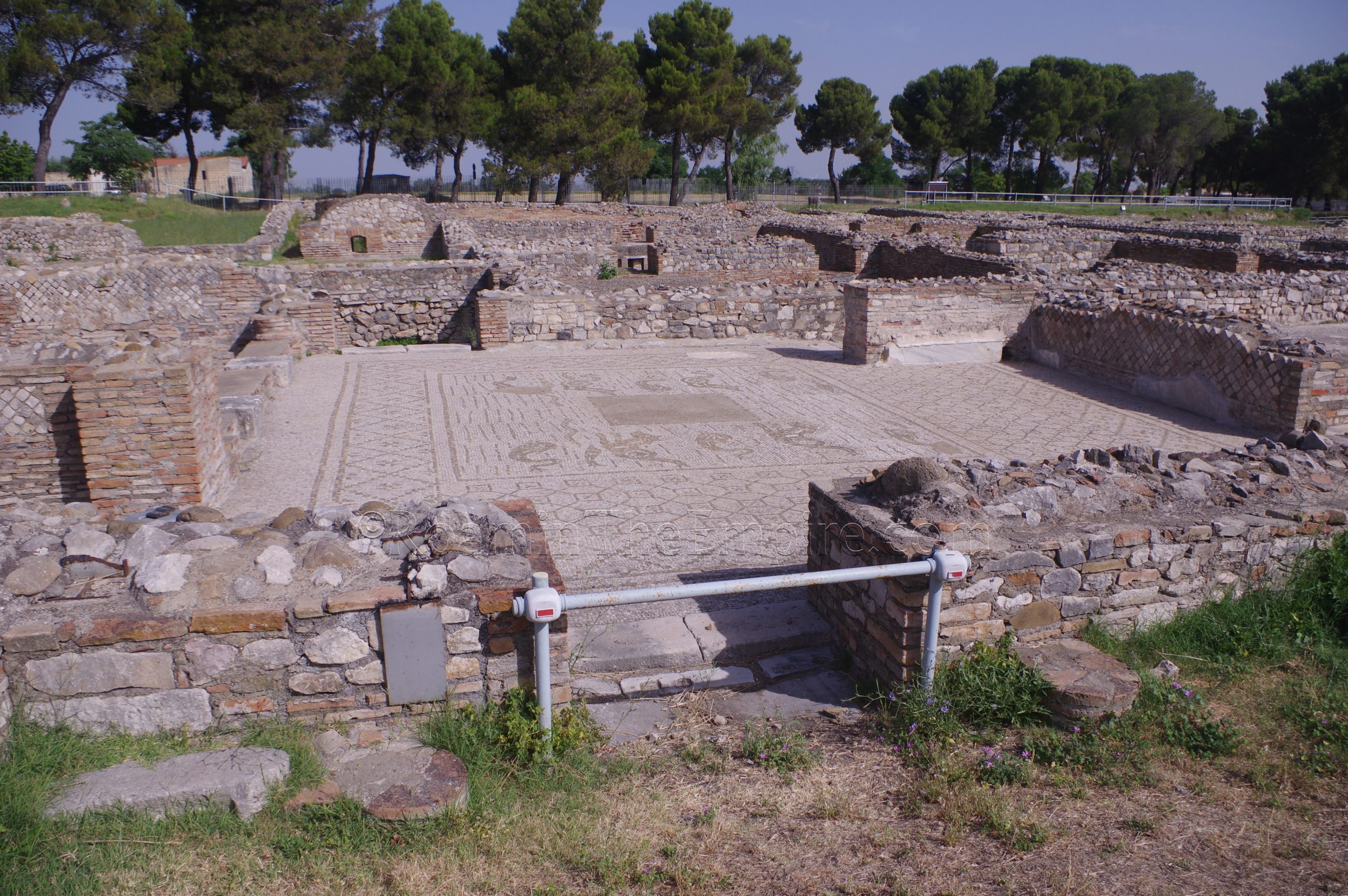
Upon entering the small ticketing building and courtyard for the site, there are a few inscriptions on display in the courtyard area. The archaeological site itself is effectively composed of elements of three insulae. The southernmost of these is made up of a bathing complex in the eastern part and a residence in the west. Unfortunately these are not directly accessible. One can walk along the decumanus that runs to the north of these buildings, and around the rise that surrounds them on the other sides, but not within the buildings.
The baths were originally constructed in the 1st century CE on the spot of what seems to have been a large public building of unknown use during the Republican period. The baths were heavily renovated in the 2nd century CE, perhaps during the reign of Trajan or Hadrian, and again in the 3rd century CE. They were then abandoned in the 4th century CE. Without the direct access, some of the rooms are hard to see, but the large intact mosaic (missing the emblem) from the frigidarium is pretty clearly visible at the southwestern portion of the complex. An apsidal pool extends to the west. Immediately to the east of the frigidarium is the apodyterium. North of these rooms are a series of two divided tepidaria (or laconica), with remnants of the hypocaust system in each, and a praefurnium off the east side of each. The northern of these two praefurnia is covered by a vaulted roof. A palaestra is also located in the open space to the west of these two rooms. The final heated room in the north, with another apsidal pool on the west side and another division in the middle of the room, is the caldarium. Additional service area for the complex is on the north side of the caldarium. The east-west division in the middle of each of the heated rooms belongs to the later renovations, as they were originally single, large rooms.
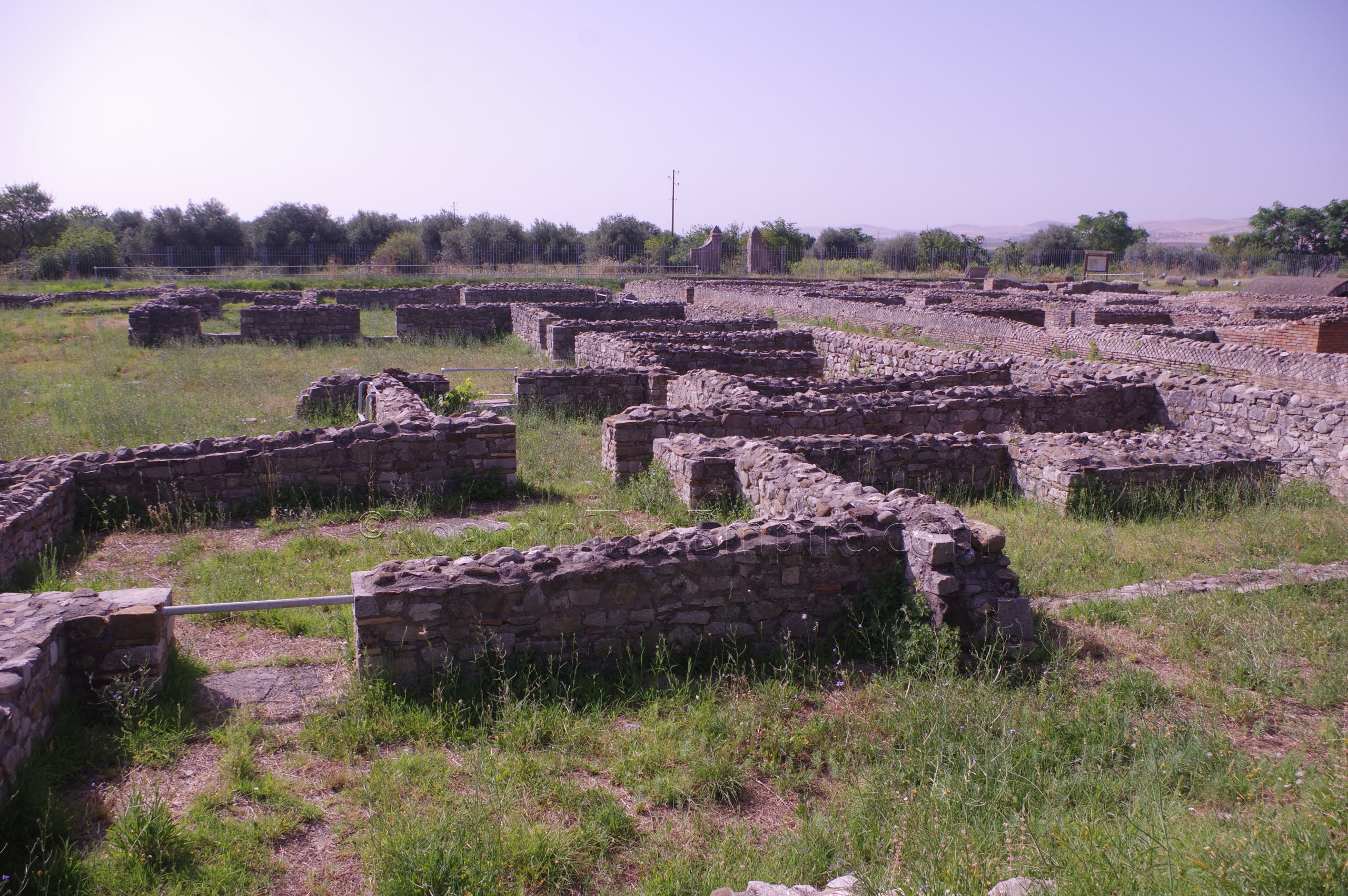
At the north end of the insula which contains the bathing complex, is a modest sized domus. Originally constructed in the 2nd century BCE, the house was renovated in the imperial period, from which most of the visible remnants date. It replaced an earlier residence perhaps dating to the 3rd century CE, and was later overlaid by a much later dwelling from the 10th-11th century CE. The structure of the house is a plan of several rooms around an atrium, of which the impluvium is the most recognizable feature. The fauces were located to the south/southwest of this, and the tablinum to the north/northeast, adjacent to the decumanus.
Across the decumanus (of which much of the paving of the street is intact) to the northeast are the remains of a large residential-commercial complex. This building dates back to the 2nd century BCE but remained in continuous use through to sometime in the 4th to 6th century CE, when it was noticeably altered. The southern part of the complex adjacent to the street seems to have been used for commercial purposes, though the exact nature of which is unclear. The northern part was a residential building arranged around a peristyle courtyard. Some remnants of the impluvium at the center of this are visible. In both sections, the facing onto the street to the west, were taberna. Further into the insula (toward the northeast) is another area that seems to have had some industrial or commercial use, with the presence of furnaces and hearths. Another, not really accessible decumanus lies beyond this. Unlike the baths, this area is not restricted, so one can walk around here, but there isn’t terribly much of note to see.
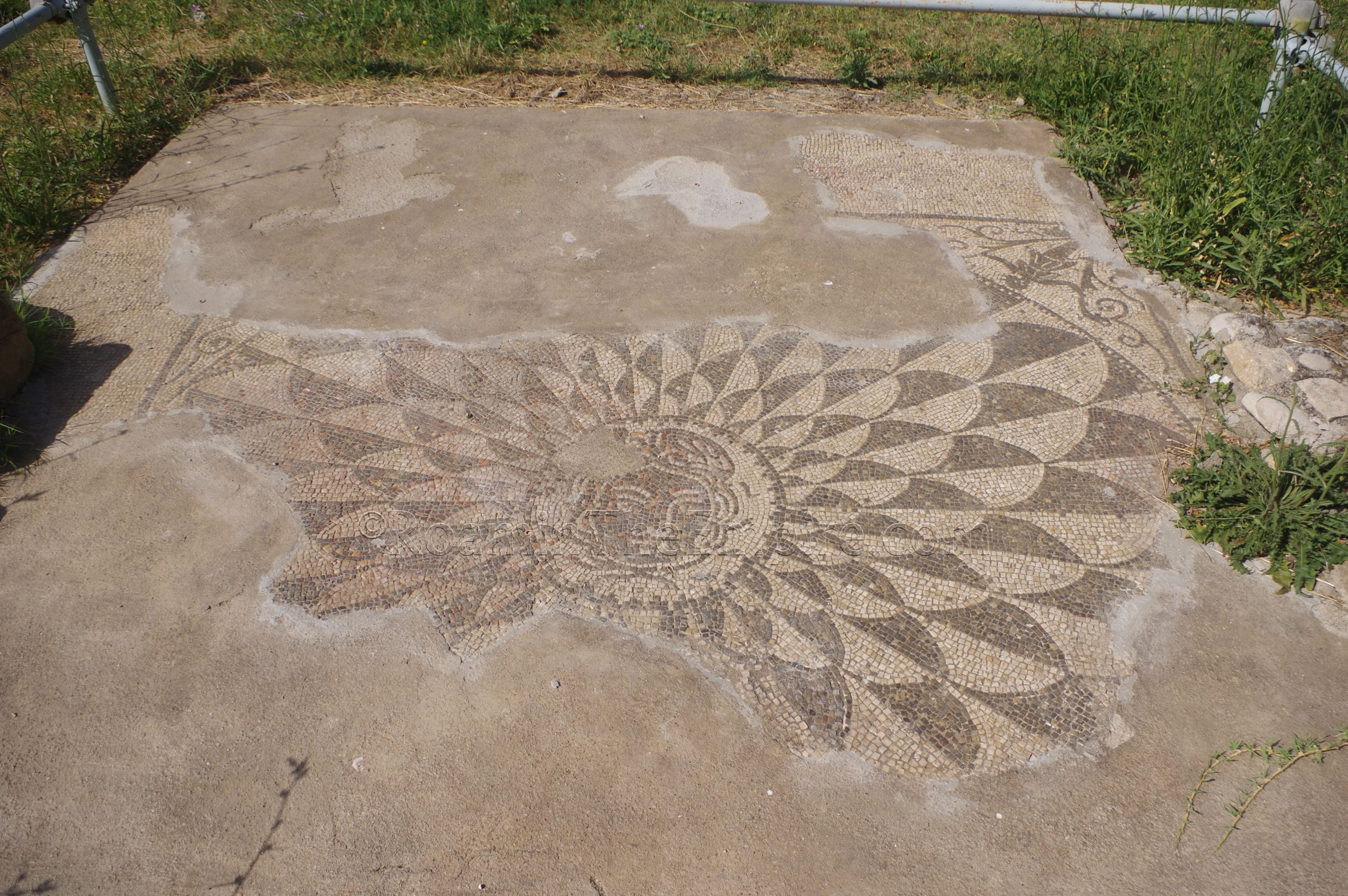
Across this second decumanus are the remains of the episcopal complex. This area, originally taken up by a residential complex in the early imperial period, was converted during the 5th-6th century CE into a series of two churches. The remains of the southernmost of these two churches is visible now. The trefoil apse of the north/south (northeast/southwest) oriented church is the most recognizable and robust feature. Some remains from the Roman residential building are visible in the northwest corner, including some mosaic pavement featuring the head of Medusa. This area is also mostly open to wander around in as well.
The imposing façade of the building to the immediate north of this first church dates to a much later period. The so-called Incompiuta, the un-finished church, was built as an extension of the second earlier church, which stood in the place of the present-day Basilica della Santissima Trinità in Venosa to the northwest. The unfinished church dates to the 11th or 12th century CE, but utilizes spolia from the forum of Venusia. Most interesting, scattered around the walls of the unfinished church are elements from a monumental bronze inscription set into the paving stones of the forum naming the duumvirs Quintus Plotius and Marcus Valerius and the aediles Publius Vettius and Lucius Caetronius. The archaeological museum in town has an interesting multimedia display of the blocks reassembled. There are a number of other inscriptions and reliefs scattered around in the walls.
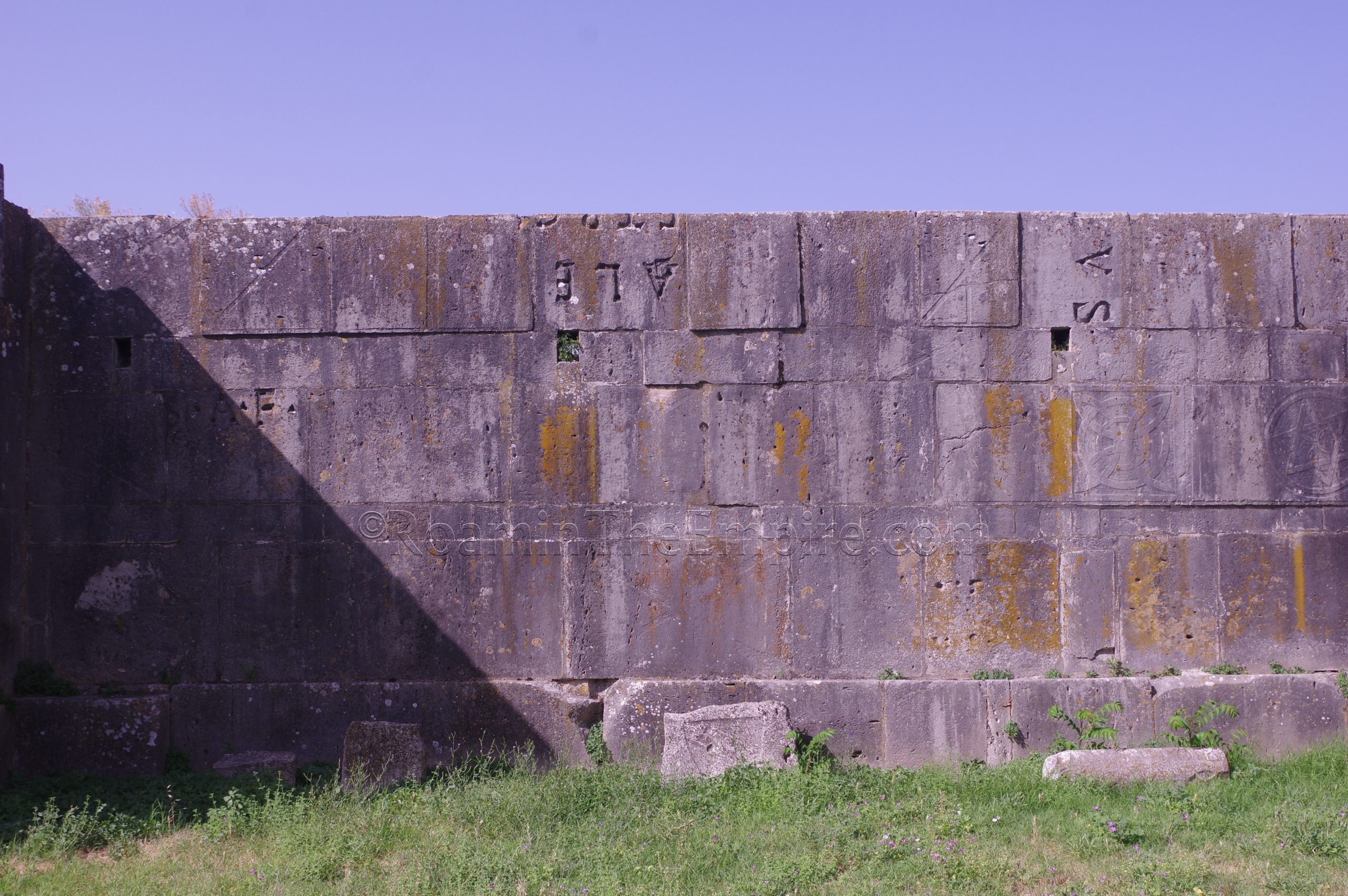
The park isn’t terribly large, and with the baths and first domus inaccessible, it doesn’t take too long to visit. It took me about an hour. There are helpful informational signs in Italian, English, French, and German throughout the site with useful diagrams and illustrations explaining the phases of construction and layout of each of the buildings. Lining the site along the south between the entrance and the baths are a number of funerary inscriptions as well.
There are a few things worth seeing in the immediate vicinity of the archaeological park. The first is the Basilica della Santissima Trinità in Venosa, the modern church connected to the unfinished church, but inaccessible from the archaeological park. The church is open daily between 8:00 and 12:30 and 16:00 and 18:00. There is no admission fee.
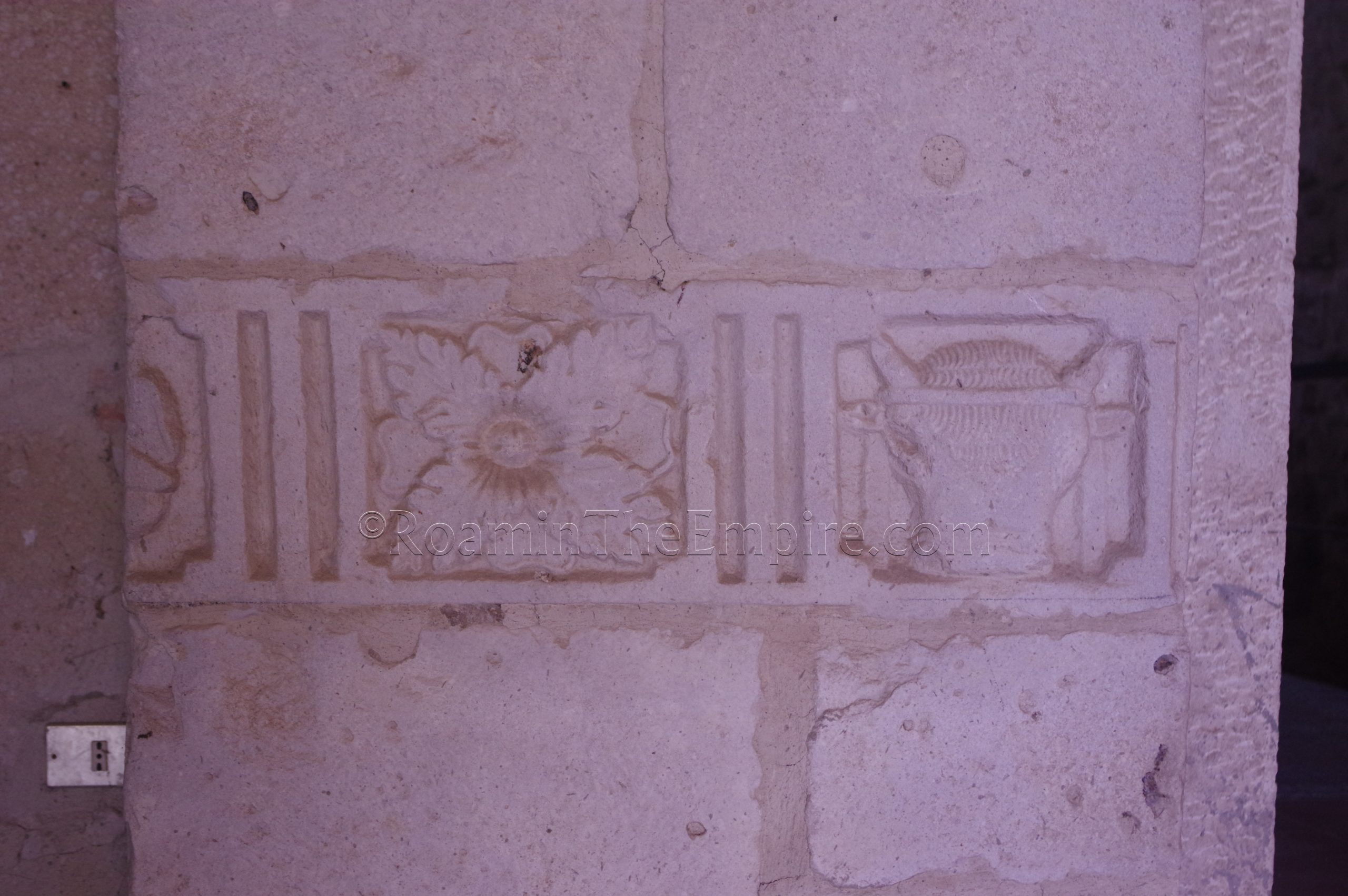
There are a couple of interesting things of note within this church. Immediately inside the entrance, off to the left is a little open air patio that contains a lapadarium. Much of what is here is later, but there are a few inscriptions and reliefs from the Roman period. At various points locations in the main part of the church, are the exposed remains of the 5th-6th century CE church as well as those of the earlier Roman residential complex that preceded the churches in this area. Sometimes both are visible in the same area, such as the entrance to the nave, where a mosaic from the church can be seen with remains of the Roman building beneath it. Another large area or mosaic dating to the Roman period is exposed in the northern side aisle of the nave and more early Christian mosaics flank the two pillars adjacent to the transept. Finally, there are various bits of spolia located around the church. The most apparent examples are in the narthex, where part of a monumental inscription is visible as well as significant portions of reliefs featuring bucrania and floral motifs. Lion sculptures outside the entrance would also seemingly date to the Roman period. There are some informational panels in the church, however everything is solely in Italian.
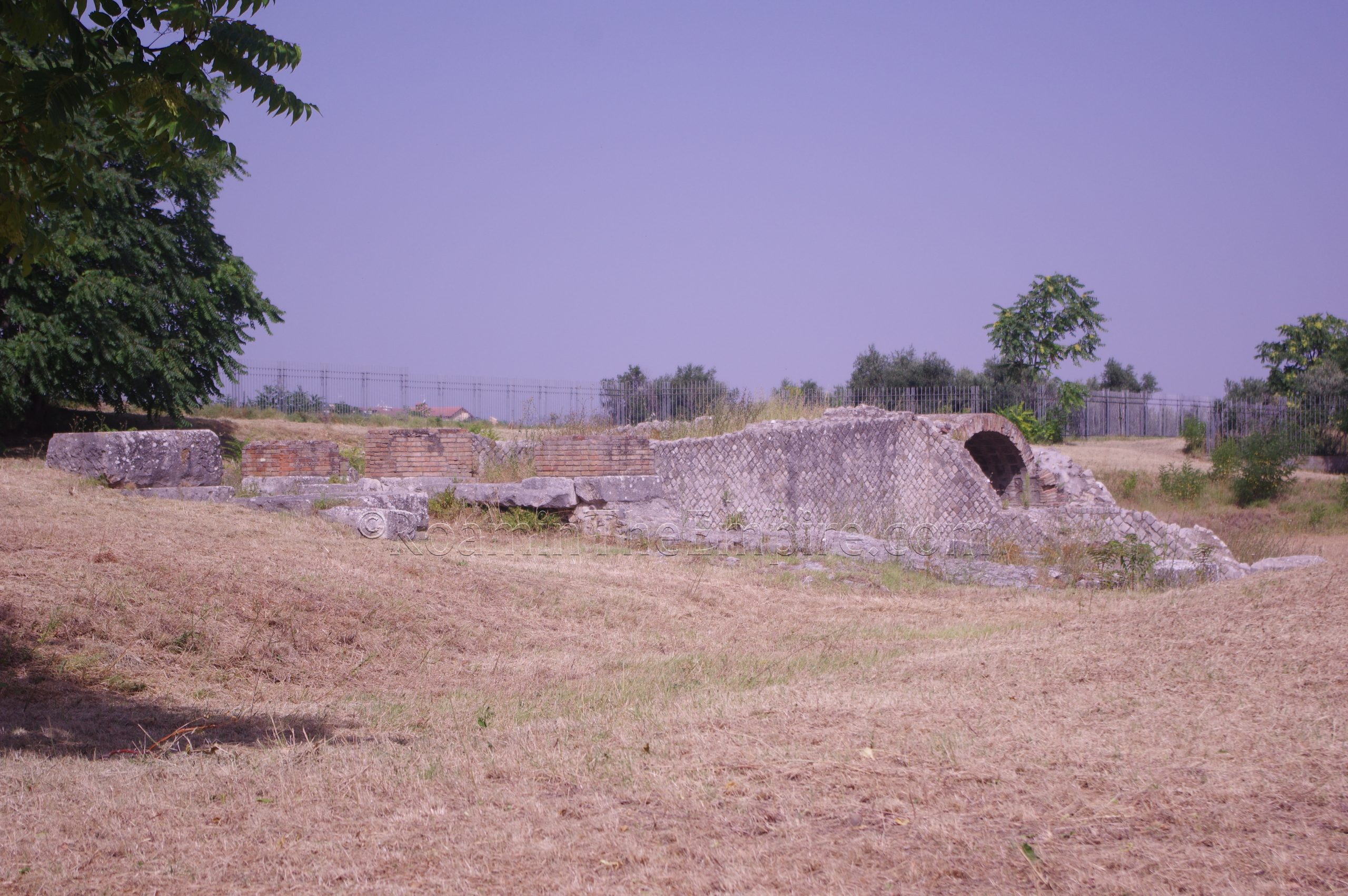
Across the street from the church are the remains of the amphitheater, constructed in the 1st half of the 1st century CE. A major renovation occurred in the 2nd century CE. A number of preexisting residential buildings were cleared for its construction. Unfortunately, the amphitheater is not currently accessible, and has not been accessible for a while. Nor does it seem it will be accessible any time soon. A sign touting money for its restoration in 2022 is attached to the fence, but there is seemingly no ongoing work. Some of the remains of the amphitheater are visible from the street, though.
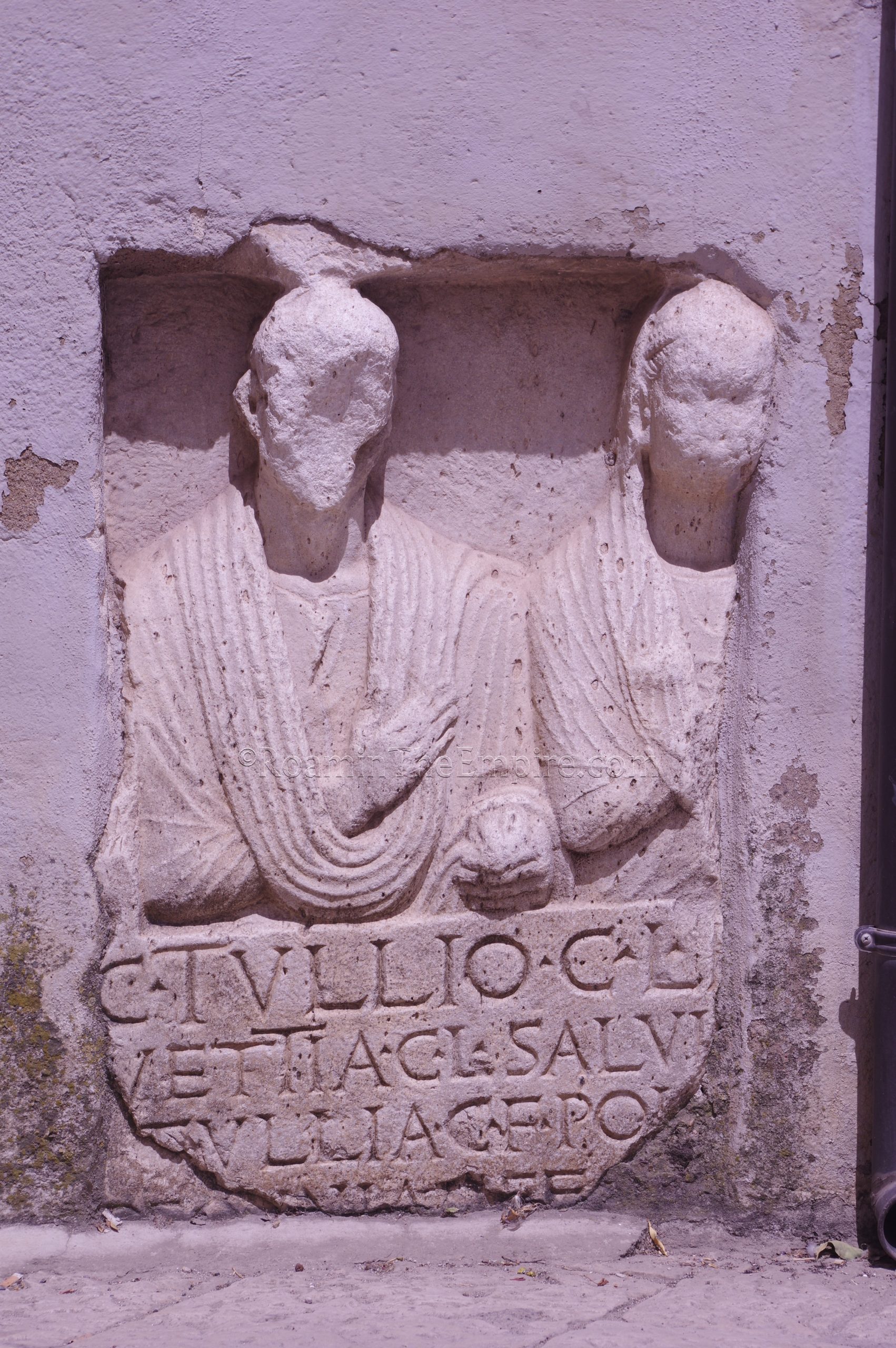
About a 15 minute, 1 kilometer walk to the south is the Castello Aragonese, the location of the Museo Archeologico Nazionale Mario Torelli. If one takes the most direct route along Via F. Frusci/Via Vittorio Emanuele II, there are a couple points along the way at which distinctive spolia from Venusia can be seen reused in modern Venosa. In the base of the bell tower of Concattedrale di Sant’Andrea Apostolo off Piazza Municipio, bits of several Roman inscriptions and portraits from a funerary relief can be seen in the western façade. A few minutes on from here, just north of Via Vittorio Emanuele II’s intersection with Vico Piazzetta, the remains of another funerary inscription and relief is reused low in the wall. A small street just to the south of this leads to the Fontana di Messer Oto, which features a sculpture of a lion dating to the Roman period.
Continuing on to the Museo Archeologico Nazionale Mario Torelli, the museum is open daily from 9:00 to 20:00, except for Tuesdays, when it is open from 14:00 to 20:00. Admission is included in the 2.50 Euro combination ticket for the Scavi Archeolgici Di Venosa.
The museum is a decent size with a collection including objects from immediately prior to the Roman conquest of the area through to the imperial and early Christian occupation of the site. There are some particularly interesting objects; a series of nine cippi with the names of Oscan gods inscribed atop them, which probably formed the base of a platform used in an auguraculum. Another is a fragment of a bronze tabula, the so-called Tabula Bantina, which is an Oscan inscription from the early 1st century BCE concerning the administration of the Bantia community. Some fragments of wall painting, mosaic, and sculpture in addition to other small finds also round out the collection.
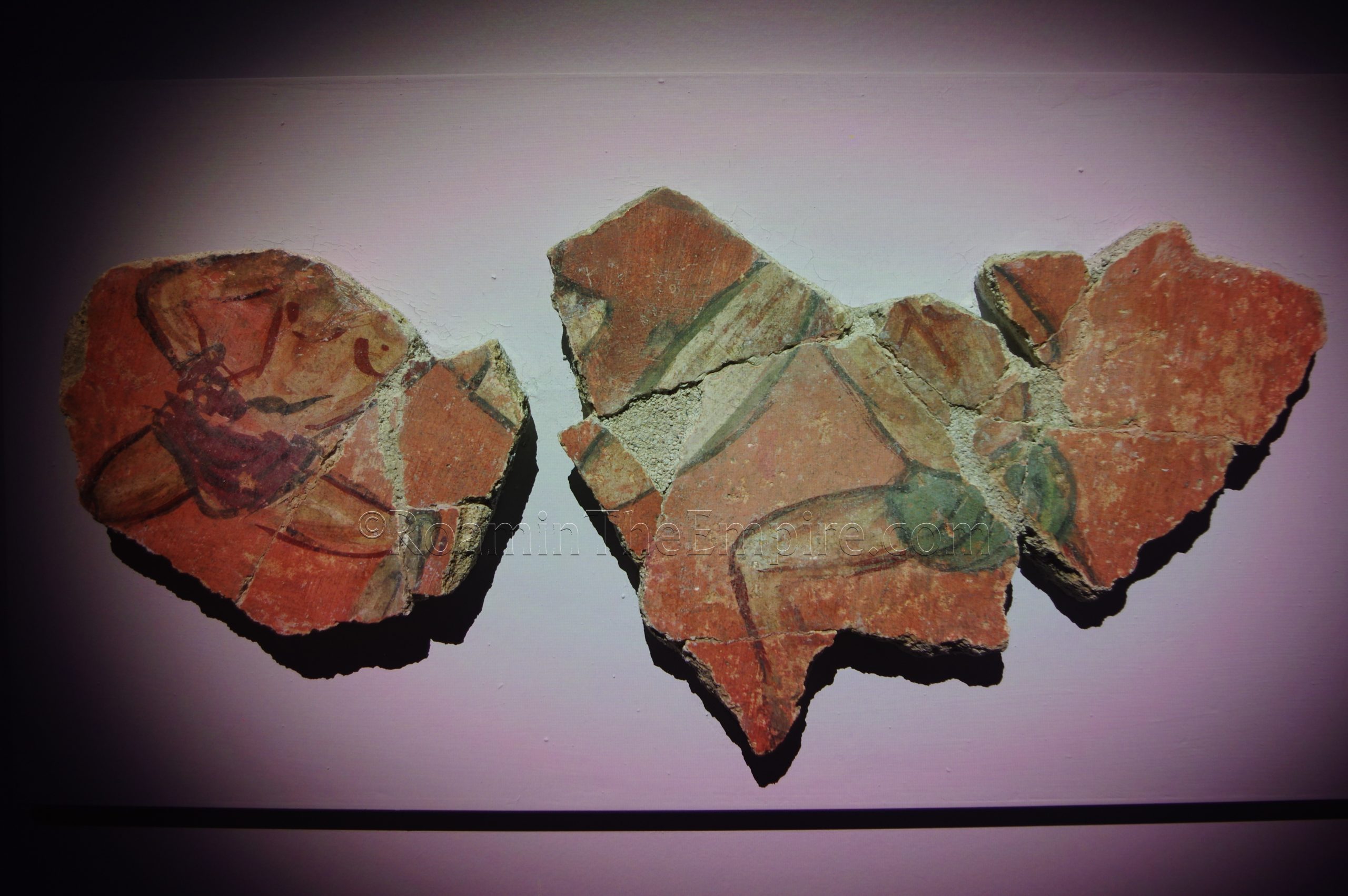
Perhaps the biggest strength of the museum is the large amounts of information available in both Italian and English. There are many informative boards with illustrations and maps in addition to the object descriptions which contextualize the city and the collection. There are also several multimedia displays that are fairly informative, even if they do sometimes make it difficult to view some of the objects onto which they are projected. It took me about an hour and a half to make my way through the museum.
All told, I spent about three hours total for everything in Venosa, including a little time wandering around the city center looking for spolia. It’s pretty easy to do as a day trip. I stopped in Venosa on my way driving between Foggia and Taranto, and it was a pretty easy stop. I didn’t see anyone else at the archaeological park or museum; it’s definitely a bit off the tourist path, which is part of what made it such a good stop in my opinion.
It’s worth noting that there are also some Jewish catacombs dating to the 4th to 6th century CE a couple kilometers to the north of Venusia, but these are not currently open. Like the amphitheater, they haven’t been open for several years, and though they are officially describe as being able to be visited by appointment, this does not actually seem to be the case.
Sources:
Appian. Bellum Civile, 1.5-6, 4.1.3.
Diodorus Siculus, Bibliotheca Historica, 37.2.10.
Dionysius of Halicarnassus. Antiquitates Romanae, 17.5.1-2.
Grant, Michael. A Guide to the Ancient World: A Dictionary of Classical Place Names. New York: Barnes & Noble Books, 1997.
Horace. Odes, 1.27.
Horace. Saturae, 2.1.24.
Livy, Ab Urbe Condita, 22.49-60, 27, 31.49.
Polybius, Historia, 3.116-117.
Pliny the Elder. Historiae Naturalis, 3.16.3-4.
Plutarch. Marcellus, 29.1.
Smith, William. Dictionary of Greek and Roman Geography. Walton & Murray, 1870.
Stillwell, Richard, William L. MacDonald, and Marian Holland. McAllister. The Princeton Encyclopedia of Classical Sites. Princeton, NJ: Princeton U Press, 1976.
Strabo. Geographika, 5.4.11, 6.1.3.
Velleius Paterculus. Historiae Romanae, 1.14.2.



One thought on “Venusia, Samnium”
Comments are closed.